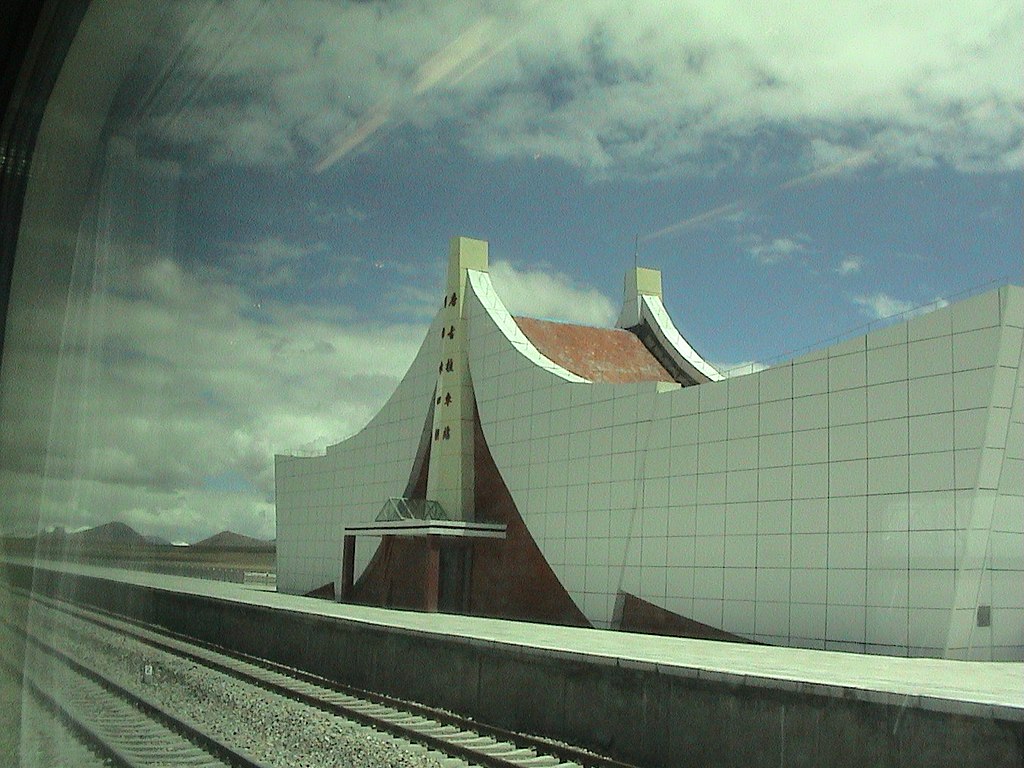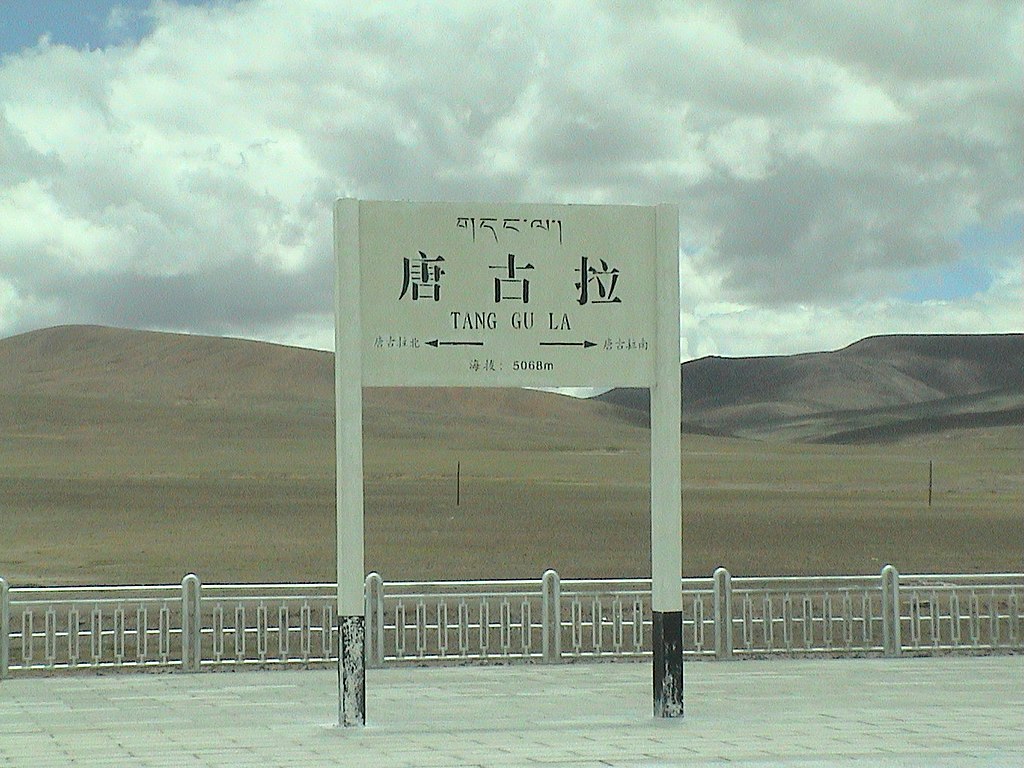Learn About the Highest Train Station in the World at Tanggula Pass

You'll find Tanggula Station, the world's highest railway station, perched at a staggering 5,068 meters (16,627 feet) in Tibet's remote mountains. This unstaffed marvel spans 77,002 square meters with three tracks and a platform stretching over a kilometer long. While you can't disembark during operational stops, the station serves as a pivotal freight and maintenance hub along the Qinghai-Tibet Railway. The engineering feat's full story reveals nature's most extreme challenges conquered.
Image: Yaohua2000, 20060731061434 -唐古拉站, CC BY-SA 3.0
Location and Setting of Tanggula Station
Perched at a breathtaking 5,068 meters above sea level, Tanggula Station stands as the world's highest railway station near the border between Tibet and Qinghai Province in China. You'll find this remarkable Tibetan station sprawling across 77,002 square meters of terrain, featuring three tracks and a distinctive platform layout that includes one main platform and a shorter stub platform.
What makes Tanggula railway station even more fascinating is its proximity to the highest point of the entire railway line. When you're at the station, you're just a kilometer away from where the track reaches its peak elevation of 5,072 meters. This strategic location along the Qingzang railway makes it an indispensable stop in one of the world's most ambitious high-altitude rail projects. Like the iron rails that revolutionized early railway development, the tracks at Tanggula Station are engineered to withstand extreme conditions while maintaining durability for consistent traffic.
Engineering Marvel at 16,627 Feet
Innovation reaches new heights at Tanggula Railway Station, where engineering feats have conquered the challenges of building at 16,627 feet above sea level. As the world's highest railway station, Tanggula stands as a vital testament to China's advanced infrastructure capabilities in extreme environments.
You'll find this remarkable station along the Qinghai-Tibet Railway, where engineers tackled the harsh conditions of the Tibetan plateau to create a half-mile-long platform that seamlessly integrates with the surrounding scenery. While the station remains unstaffed due to its extreme altitude, it's an essential part of this groundbreaking railway system.
The engineering accomplishments at Tanggula demonstrate how modern technology can overcome seemingly impossible obstacles, making transportation possible even in one of Earth's most challenging environments. Like the Trans-Siberian Railway construction, this project required extensive maintenance checks to ensure safe operations in extreme conditions.
Station Design and Infrastructure
The immense scale of Tanggula Railway Station becomes apparent in its sprawling 77,002-square-meter footprint, complete with three parallel tracks and a main platform stretching 1.25 kilometers. As the world's highest railway station, perched at an elevation of 5,068 meters in Tanggula Pass, it features a unique design that includes a short stub platform alongside its main platform.
While the facility primarily serves freight and maintenance operations along the Qingzang railway, it's also used as a passing point for trains traveling in opposite directions. If you're aboard a train that stops here, you'll need to stay inside, as the station doesn't offer passenger services in this remote region.
You'll find the station's location was strategically chosen to showcase the scenic view, though you won't encounter any station staff here. The station's elevation surpasses even the heights reached by the famous Jungfrau Railway in Switzerland, which climbs to approximately 11,000 feet.
Operations and Passenger Services

Image: Yaohua2000, 20060731055605 -唐古拉站, CC BY-SA 3.0
Operating as an unstaffed facility, Tanggula Station serves primarily as a strategic point for freight operations and maintenance along the Qingzang railway line.
As you travel on the Qinghai-Tibet railway between Qinghai and Lhasa, you'll find that Tanggula station doesn't offer regular passenger services. While trains may stop here to allow other trains to pass on this remote stretch of the Tibetan Plateau, you'll need to remain onboard during these operational stops.
If you're hoping to disembark and experience the station's unique location, you should know that it's not guaranteed. The station's main purpose is to support the railway's operational needs rather than serve as a regular passenger stop. Before planning your expedition, it's crucial to check with the service provider about any potential stops at this extraordinary location.
Natural Surroundings and Climate Challenges
Surrounded by the majestic Tanggula Mountains, this record-breaking station faces some of Earth's most extreme weather conditions at its staggering elevation of 5,068 meters. You'll find yourself in a high-altitude environment where temperatures can plummet below -20°C, making it one of the harshest railway locations on the Tibetan Plateau.
The challenging terrain's permafrost and uncertain landscape created significant engineering obstacles during construction. To safeguard your safety and comfort while traveling through this remote area, trains are equipped with an oxygen supply system to combat the thin air at such extreme heights.
Due to its isolated location and harsh conditions, you won't find regular passenger services here - the station primarily serves freight and maintenance operations in this demanding mountain environment.
Historical Significance of the Qinghai-Tibet Railway
Since its completion in 2006, China's Qinghai-Tibet Railway stands as a monument to human perseverance and engineering innovation. You'll find this exceptional infrastructure project, featuring the world's highest railway station at Tanggula Pass, transformed Tibet's connectivity after decades of isolation.
The railway's construction across the challenging Tibetan plateau conquered extreme high altitudes and harsh conditions, demonstrating China's engineering prowess and commitment to nation-building. You can witness how this pioneering project, which began in 1958, has revolutionized the region's economic development. Not only has it stimulated local industries and employment, but it's also opened up unparalleled tourism opportunities.
The railway's success in overcoming seemingly formidable challenges marks a crucial moment in infrastructure history, connecting Tibet to the rest of China for the first time.




